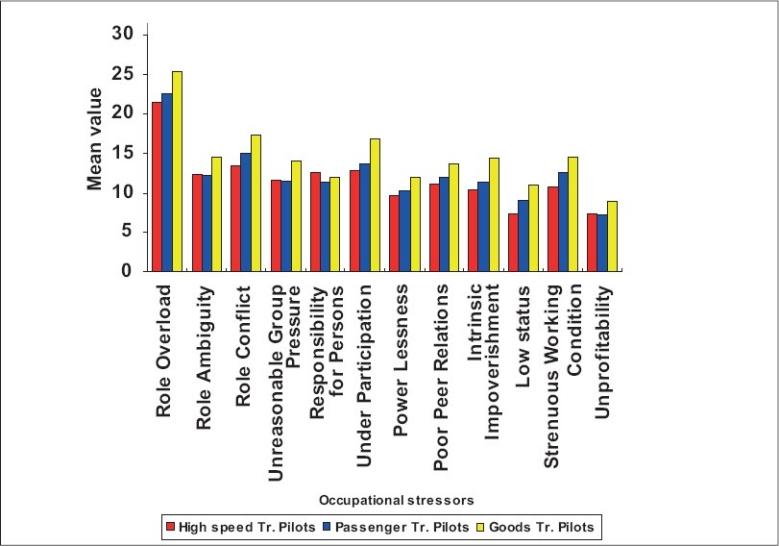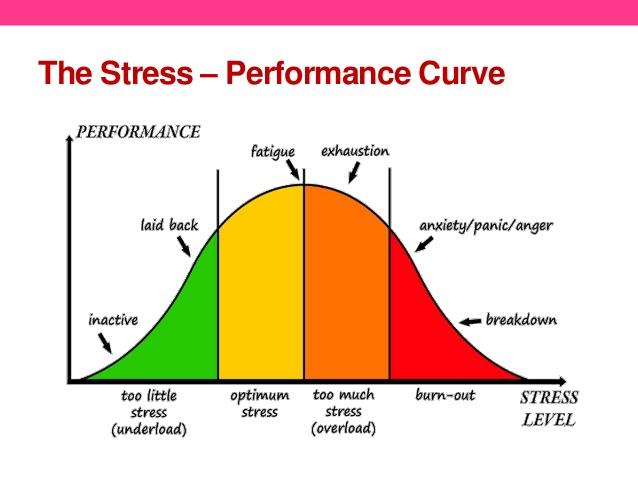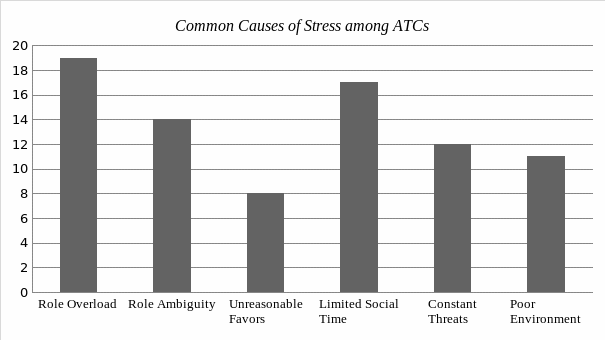Abstract
The case study focused on identifying the causes of stress disorder among air traffic controllers at ATL, its impact, and ways of managing it. It is clear from the analysis of both primary and secondary data that role overload, role ambiguity, unreasonable demand for favors, limited social time, constant threats, and poor workplace environment are the leading causes of stress disorder. If left unchecked, stress may cause health and social problems to these employees and economic problems to the airport. The study has identified a number of ways of addressing this problem.
Introduction
Air traffic controllers (ATC) play a critical role in the daily operational activities at Hartsfield–Jackson Atlanta International Airport (ATL). According to a report by Barusch (2017), ATL is currently the busiest airport in the world, accommodating over 950,120 flights and 100 million passengers in the year 2012 alone. It has maintained the top position since 1998, which is a clear demonstration of the effort put in place by stakeholders to ensure that it remains a successful airport.
However, recent studies have indicated that ATCs are exposed to numerous hazards that may have a serious negative impact on their health, their output, and the operational activities at ATL. A study by Zastrow (2017) indicates that stress disorder is one of the most common hazards that ATCs face in their workplace.
These officers spend a lot of time controlling ground and air traffic within the airport to ensure that no accidents or incidents occur. Sometimes they work for very long hours and under strenuous conditions. There are a number of other factors that cause stress disorder among the ATCs. In this case study, the researcher will investigate the causes and impact of stress disorder among ATL’s ATCs and then recommend ways through which this problem can be eliminated.
Methodology
When conducting a case study, Seal (2012) says that it is important to define how data will be collected. Information used in this case study was collected from both primary and secondary sources. Secondary data was collected from books, journals, and reliable online sources. As Barusch (2017) notes, conducting a review of the literature makes it possible to understand what other scholars have found out in a given field of knowledge.
It eliminates cases where a report duplicates already existing information. A review of literature helps in identifying the knowledge gap so that a researcher can know that area to focus on enhancing the existing knowledge. Primary data was collected from a sample population, as discussed below.
Sampling and Sample Population (Participants)
It was necessary to collect data from the affected population (air traffic controllers) who are working on a daily basis to ensure that operations at ATL run smoothly. A number of them have indicated that their workplace environment is highly stressful, and it was necessary to hear directly from them. Given the tight schedule of these participants, and the limited time that the researcher had to conduct the study, a small sample of 20 participants was selected. The researcher used a stratified sampling strategy to ensure that the participants properly represent the entire population. This approach ensured that tower controllers, approach and departure controllers, and en route controllers are included in the sample.
Data Collection Procedure and Material Used
The researcher wrote a letter to the management unit at ATL, requesting that the research be conducted at the institution. The letter was hand-delivered to the relevant authority. After getting the needed approval, the researcher identified and contacted a sample of the ATCs at this airport through a phone call. 20 participants from the three units who agreed to be part of the study were selected.
The researcher explained to them the relevance of the study and their role in it. It was necessary to prepare the material for data collection in advance. A questionnaire was prepared and sent to the participants through their e-mail. They were requested to fill the questionnaires and send them back electronically. Information obtained from them was analyzed to help inform the conclusion and recommendations in the study.
Data Analysis
Data collected from the primary sources were analyzed qualitatively to help explain how ATCs are exposed to a stress disorder, the impact of this problem, and what can be done to address it effectively. The analysis also involved comparing the findings made from primary data from that made from secondary data sources. The findings from the analysis defined the conclusion made in this study and recommendations that were proposed.
Ethical Considerations
When conducting research, Seal (2012) says that it is important to take into consideration ethical concerns. The researcher ensured that before contacting the participants, the relevant authority was contacted, and the needed consent was received. The researcher informed the participants about the research in advance to ensure that they were fully prepared for the study. The respondents were at liberty to withdraw from the study at any time without any consequences.
Literature Review
Occupational health and safety management is a concern that has attracted the attention of scholars over the recent past as stakeholders try to find ways of making workplace environment safer and friendlier to employees than was the case in the past. Air traffic controllers play a critical role in the aviation industry and the lives of thousands of passengers and the safety of properties worth millions of dollars are always in their hands on a daily basis as they work tirelessly to ensure that planes take off and land safely within the airports (Sarafino & Smith, 2014).
The soundness of their mental and physical health is critical in ensuring that they are able to undertake their responsibilities without making mistakes (Sarafino & Smith, 2014). A simple mistake committed by an air traffic controller can be catastrophic and may cost many lives if it is not corrected at the right time. That explains why the issue of stress disorder management among these airport employees has attracted a number of scholars who are keen on promoting the safety and security of people and properties within the aviation sector.
Scope and Magnitude of the Problem
According to Bor and Hubbard (2016), air traffic controllers are always under immense pressure to be precise in everything that they do. They must be capable of making very quick calculations and decisions in order to avoid aircraft conflicts and any threat that may be exposed to the aircraft. Grogan (2014) says that primary sources of stress that air traffic controllers have to deal with can be broadly classified as operational and organizational.
The operational stress emanates from the nature and scope of work they undertake on a regular basis. Clarke (2016) says that during the peak of traffic load, these controllers experienced increased levels of stress. Their attention is needed almost to the last second. As soon as a given plane takes off, another one will be landing, and they have to control them. Sometimes the equipment they use fails to function as expected, and they have to find alternatives within the shortest time possible to avert danger. Zastrow (2017) says that one of the greatest fears among air traffic controllers is experiencing a situation where they are coerced to bend the rules.
It may be a terrorist demanding to land without any prior schedule. At times it may be an instruction from a higher authority within the airport. The possibility of serious repercussions of such favors often causes stress among these airport employees. Clarke (2016) says that sometimes the problems that ATCs experience are similar to those that pilots suffer on a regular basis. The figure below shows statistics of some of the common sources of stress disorder among pilots and air traffic controllers.

Organizational stress is often caused by a number of factors. One of them is shift schedules (Bor & Hubbard, 2016). Sometimes the management would force them to work for extra hours, especially during peak, to meet the high demand. When these officers work past their normal schedule, it is impossible to avoid stress because they are expected to remain sharp even though they are tired. There are cases where role conflicts arise.
Ward (2012) says that when a tower controller is forced to work as an approach and departure controller, he or she will struggle to adjust to the new role, and that may be a source of stress. Some of them have complained about an unfavorable working environment that makes their work more complex. These problems not only affect ATCs locally within ATL but also others at the national and global levels. They are globally systemic (Sarafino & Smith, 2014). The following figure shows the stress-performance curve

Federal and industry statistics show that stress disorder among ATCs is becoming a serious problem that can no longer be ignored. Ward (2012) says that the morbidity of this problem is high, although the mortality rate is still low. Many of these employees are highly stressed, and it is by luck that mistakes related to their high levels of stress at the workplace are rare. When analyzing the epidemiology of the problem, it is clear from a study by Jensen (2012) that tower controllers and approach and departure controllers have the highest incidence of stress disorder.
Stakeholders have tried to find ways of managing this problem, and one of the most common recommendations include allowing ATCs to work in an enabling environment and as per the standards schedules without being overworked (Weir, 2013). As shown in figure 2 above, when overworked, the levels of stress may increase to a breakdown level where the employees cannot properly perform because they are burnt out.
Their inability to perform properly may have serious economic consequences to the airport, besides putting thousands of lives at risk. The poor performance of an individual air traffic controller affects the overall economic performance of the airport (Angle, 2016). Some of the direct costs may be damage to planes or facilities within the airport. Indirect cost may be the loss of time when these employees take longer than expected to respond to the needs at the airport. Their social lives may also be affected by stress, especially when they can no longer relate well with friends and family because of the disorder.
Discussion of Findings
Hazards and Exposure
In the literature review, a detailed discussion of exposures that are responsible for stress disorder among air traffic controllers is provided. They are broadly categorized as operational and organizational based on their nature. Occupational health and safety guidelines provided a standard practice that should be embraced by airport management authorities to eliminate such sources of stress among the employees. If left unchecked, stress may develop into a serious health problem.
Grogan (2014) notes that stress is often associated with dangerous diseases such as cardiovascular diseases, obesity, mental illnesses, and cancer. Stress disorder among ATC is chronic as it keeps on recurring whenever the workload increases. Bristow (2012) says that there is a limit beyond which every individual air traffic controller cannot work effectively. The findings from the literature are in line with the information gathered from the participants. The figure below shows what the participants feel are the most common causes of stress in the workplace.

According to Bristow (2012), most of the employers do not consider the above factors as serious issues that need to be addressed, and that is why they end up causing stress among the air traffic controllers. Causal Theory holds that the personality and behavior of a person are often shaped by the experiences they have in life (Clarke, 2016). When employers fail to take care of the causes of stress discussed above, it is possible that ATCs may develop peculiar behavior in the workplace that may affect their productivity. This is true, based on the confession below given by one of the participants when asked how he copes with the stress at the workplace:
“My colleague and I have an arrangement that allows us to sleep in shifts while in the air control tower because of the strenuous schedules” (Respondent 1).
Risk Management
Using the hazard analysis method, it is important to look at the severity of stress disorder to know when authorities should consider coming up with ways of managing it. Based on the review of the literature and data collected from the participants, the following figure shows how stress develops among air traffic controllers.

As shown in the figure above, the last two stages in the pyramid are dangerous and should not be allowed within an organization. In this case study, it was established that ATL has come up with control measures to prevent such extreme levels of stress, but the measures are not measures that do not conform to the hierarchy shown above; hence they are ineffective because it majorly takes into account interest of senior managers.
Conclusion and Recommendations
It is clear from the above analysis that stress disorder among air traffic controllers at ATL is an issue that still needs a proper solution. Proactive measures should be embraced that will help avoid stress among these employees instead of using reactive measures that seek to manage to fight the vice after affecting the target population. As shown in the discussion, it is necessary to have measures put in place that will ensure that stress disorder among air traffic controllers is eliminated. The following recommendations should be taken into consideration:
- ATCs should be assigned roles based on their expertise and experience.
- The management should avoid cases where ATCs are overworked, especially when they have indicated that they may need some time to rest at the end of their schedule.
- It is necessary to avoid coercion and threats when managing ATCs.
- The environment within which ATCs work should be friendly and sustainable.
References
Angle, J. (2016). Occupational safety and health in the emergency services. Burlington, MA: Jones & Bartlett Learning.
Barusch, A. (2017). Foundations of Social Policy: Social justice in human perspective. New York, NY: Cengage Learning.
Bor, R., & Hubbard, T. (2016). Aviation mental health: Psychological implications for air transportation. London, UK: Routledge.
Bristow, G. V. (2012). Ace the technical pilot interview. New York, NY: McGraw-Hill Professional.
Clarke, S. (2016). Occupational health and safety. New York, NY: Routledge.
Grogan, S. (2014). Shell-shocked Britain: The First World War’s legacy for Britain’s mental health. Hoboken, NJ: Wiley.
Jensen, R. C. (2012). Risk-reduction methods for occupational safety and health. Hoboken, NJ: Wiley.
Sarafino, E. P., & Smith, T. W. (2014). Health psychology: Bio-psychosocial interactions. Hoboken, NJ: Wiley.
Seal, B. (2012). Academic encounters, human behavior, level 4: Reading and writing. New York, NY: Cambridge University Press.
Ward, H. (2012). Oxford handbook of epidemiology for clinicians. Oxford, UK: Oxford University Press.
Weir, R. E. (2013). Workers in America: A historical encyclopedia. Santa Barbara, CA: ABC-CLIO.
Zastrow, C. (2017). Introduction to social work and social welfare. Melbourne, Australia: Cengage Learning.